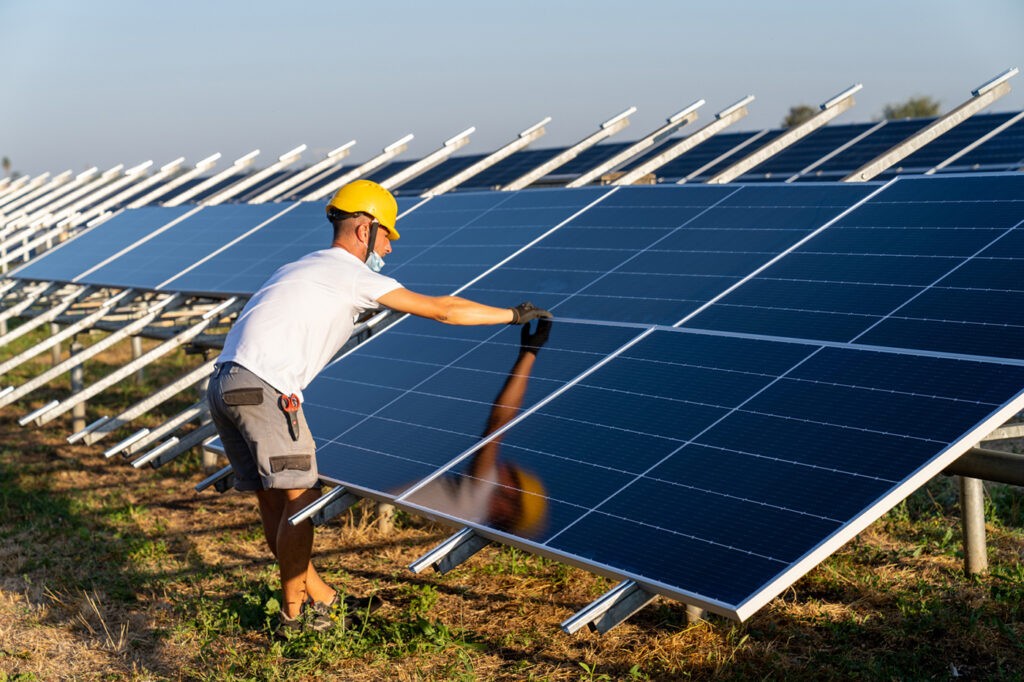Renewable energy and photovoltaics: what will change from 2023
News from the world of renewables: 2023 will see the extension of the Superbonus, but with some changes. What are they?
Our country has experienced a surge in electricity prices, leading citizens, producers, and institutions to look for new solutions to reduce the impact of high electricity prices. At the heart of the goals for 2023 is the decarbonisation of electricity production, relying on renewables. Not only that: in 2022 it was made clear that it is now necessary to become a country increasingly independent of electricity and gas from other states.
Accelerating photovoltaics in Italy
We are not the country with the highest number of photovoltaic installations in Europe. Today, Italy produces 23.57 GW or 1,087,190 active installations. Yet, we are one of the European states with the highest irradiation on the continent. Italy’s critical points are different:
- raw materials for the installation of photovoltaic systems are still very expensive today, again due to the conflicts in Eastern Europe and the rising cost of materials from areas affected by the floods in China
- it is unclear how energy exchanges work
- there is still no sound mentality leading to the ecological transition
- Italy maintains plants that are now ten years old, focusing on new ones rather than replacements.
Two scenarios are envisaged for 2023: on the one hand, an increase in the installation of systems on private homes and businesses, and on the other hand, revamping and repowering, i.e., the regeneration of panels already in place. How does revamping work? It involves replacing, removing, and reinstalling components that are now considered obsolete or moving the entire system to a new, more optimal location.
How does photovoltaic repowering work? This intervention does not involve the replacement of components within the system, but its modernisation through the addition of state-of-the-art technological elements that can increase its power output.
These two interventions have multiple advantages: they allow long-lived systems to continue to be used, improving their performance at a lower cost than installing new panels. They also solve the problem of their disposal, which can be managed in a sub-optimal way causing damage to the environment.
Super bonus 2023 on photovoltaics
The Super Bonus introduced in 2020 is getting greener. The tax incentive led to excellent results in 2022 and has also been extended in 2023. Those who benefit from the deduction can recover 65%, 70%, or 110% of the cost as a discount on the invoice with credit transfer, the important thing being that they improve the energy efficiency of their home by at least two classes.
The 2023 photovoltaic Super Bonus is valid for works carried out by IACPs and for condominiums. The main novelty of the incentive on the installation of photovoltaic systems concerns the deadlines by which the work must be completed: those who have completed at least 30 % of the work by 30 June 2022 will be eligible for the bonus, but those who own cottages and functionally independent units can join until the last day of 2022.
With regard to the works set for next year, if carried out by 31 December 2023, owners of apartment blocks or buildings consisting of 2 to 4 units and all in the name of the same person, will be eligible for bonuses. The deduction for works carried out on these buildings is extended in both 2024 and 2025, with values of 75 % and 70 %, respectively.
Other deductions for installing a photovoltaic system
To get photovoltaic panels installed on your home or business, you can also access two other bonuses. The Ecobonus introduced by the Relaunch Decree allows access to a 50% deduction on expenses incurred for the installation of photovoltaics. In conjunction with this intervention, unlike the 110% Super Bonus, which is paid out if other energy efficiency works are carried out together with the panels, there must be no other work.
The other incentive is the Renovation Bonus. The incentive covers renovation and maintenance work on buildings, requested by the owner of the property or by the tenants. The deduction amounts to 50% of the expenditure incurred, up to a ceiling of € 96,000 per property unit, recoverable in 10 years.
This incentive will be valid until 31 December 2024.
Why installing photovoltaic panels pays off
Discussions about the climate crisis and rising consumer prices are the order of the day. For decades now, solutions have been sought to curb the impact of human activities on the environment, but in recent times the need for a complete and efficient ecological transition has become a top priority. Photovoltaic panels are certainly one solution to embrace more sustainable and affordable methods of energy production.
We expect that in 2023, thanks also to the bonus extensions provided by recent Decrees, there will be an acceleration in the installation of photovoltaic panels, returning to the surge that occurred ten years ago. Since 2014, Italy has slowed down its solar race, and this has certainly had a strong impact, especially economically, on Italians’ spending.
We hope that everyone in our country recognises the advantages of photovoltaic panels, the prices of which are returning to normal, thanks to the falling cost of raw materials. Installing a photovoltaic system may cost as little as EUR 2,500 today, but it is an investment in the long term: firstly, because you are using a tool that supports the decarbonisation of energy production and, secondly, because it makes homes and businesses independent, thus significantly lowering the cost of consumption.
There is no shortage of incentives to switch to photovoltaics, and our government is constantly looking for ways to make our country more efficient. We at Viridis hope that the ecological transition will happen as quickly as possible, and we are part of it with our photovoltaic panel installation services. Please do not hesitate to contact us for more information.


